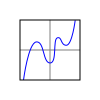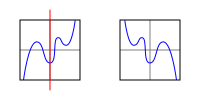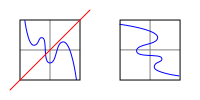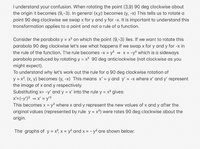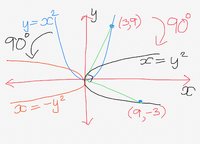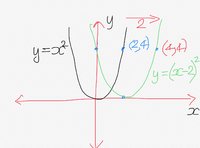Maths_Mike
New member
- Joined
- Feb 6, 2020
- Messages
- 12
I know that to transform a graph 90 degrees counter clockwise you need to replace x with y and replace y with -x in the function.
Can anyone please explain why this is the case because if you apply this rule to a coordinate point it appears to rotate it 90 degrees clockwise. i.e (3,1) would go to (1,-3)
This is causing a huge argument - Please help
Can anyone please explain why this is the case because if you apply this rule to a coordinate point it appears to rotate it 90 degrees clockwise. i.e (3,1) would go to (1,-3)
This is causing a huge argument - Please help

